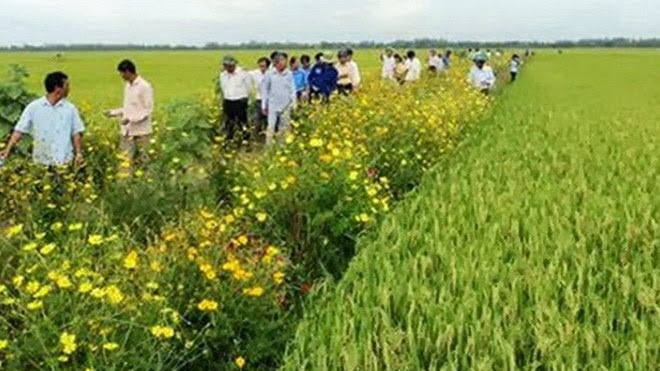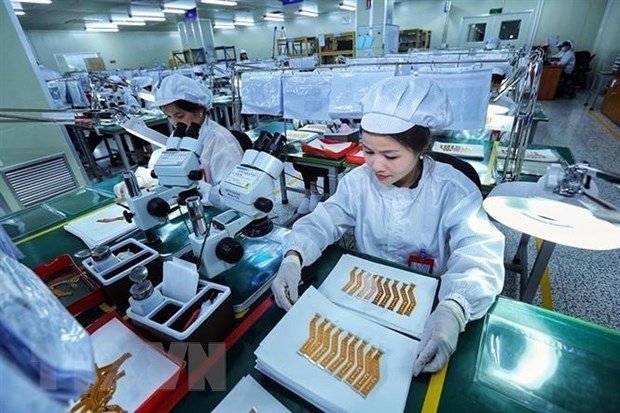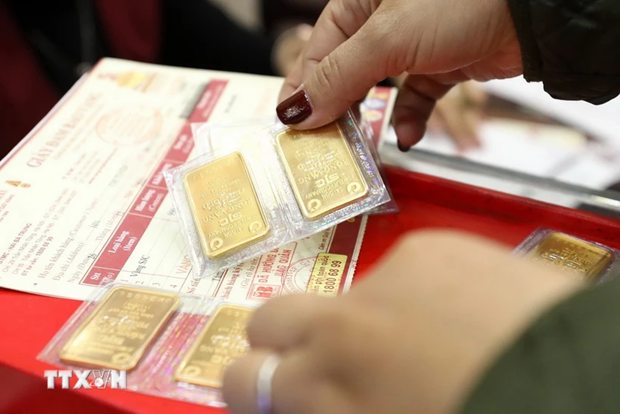 Economy
Economy

Farmers in the Mekong Delta are growing a Japanese rice variety without approval from the Ministry of Agriculture and Rural Development, leading to a possible oversupply in the market.
 |
| A flower path at the edge of rice fields in Kiên Giang Province. — VNS File Photo |
CỬU LONG DELTA -- Farmers in the Mekong Delta are growing a Japanese rice variety without approval from the Ministry of Agriculture and Rural Development, leading to a possible oversupply in the market.
Though the rice variety has been approved for use in the Red River Delta and northern midlands, its cultivation on vast areas in the Delta is expected to lead to a surplus, according to authorities.
In the Mekong province of Kiên Giang, cultivation of the rice has continued to expand despite warnings from officials.
Kiên Giang farmers are growing the rice variety on nearly 43,000ha of fields, mainly in the districts of Kiên Lương, Hòn Đất and Giang Thành, according to the National Statistics Bureau.
Đỗ Lê Hữu, a farmer from Kiên Giang Province’s Hòn Đất District, said the Japanese rice variety produced higher yields than traditional varieties.
“I’ve signed sales contracts for our rice, so I’m not worried about sales,” Hữu said, adding that traditional rice varieties were sold via middlemen at unstable prices, and the traditional rice was often difficult to sell.
Another farmer from Hòn Đất District, who declined to be named, said he had signed a contract with a company in Tri Tôn District to grow Japanese rice on 12ha of fields and to sell undried paddy for VNĐ5,000 per kilo.
“We are focusing on production and have signed contracts, so we aren’t worried about rice consumption,” he said.
Risks to farmers
Kiên Giang farmers have signed contracts for the purchase of 30,000ha of Japanese rice, and are seeking buyers for another 13,000ha cultivated under the variety.
However, local customers remain unfamiliar with the product, according to Người Lao Động (Labourer) newspaper.
Nguyễn Văn Tậm, director of Kiên Giang’s Department of Agriculture and Rural Development, said that several local companies were exporting Japanese rice, so many farmers from the Mekong Delta were growing the variety purchased from northern provinces.
Tâm said that Kiên Giang’s Agriculture Department had asked the General Plantation Department and the Ministry of Agriculture and Rural Development to issue instructions on the unplanned cultivation of Japanese rice variety.
Many Kiên Giang farmers have expanded cultivation, and buyers have signed contracts with individual farmers to purchase the Japanese rice.
Trần Anh Thư, director of An Giang’s Department of Agriculture and Rural Development, said farmers were growing Japanese rice varieties Naha and ĐS1.
Local farmers have signed contracts to sell Naha rice planted on 5,000ha to a consortium composed of the An Giang Food Co. and Japanese company Kitoku.
The rice has been exported to countries with large Japanese communities.
The ĐS1 rice variety is being grown on 12,000ha of rice fields in Tân Tiến and Lương An Tri communes in Tri Tôn District, under contracts signed between local farmers and Vinacam.
Thư said that Vinacam planned to expand cultivation areas for the ĐS1 rice variety to An Phú, Tân Châu, Tịnh Biên and Châu Phú in An Giang Province.
Dr Võ Tòng Xuân, former rector of An Giang University, said the Japanese rice had been sold mainly to the Chinese market
"Although local farmers have found a market for the rice product, traders are ultimately the decision-makers in the market," he added.
Xuân asked local farmers to learn from the lessons of pork and banana producers, who lost money for several months because of abundant supply, low prices and poor sales.VNS









